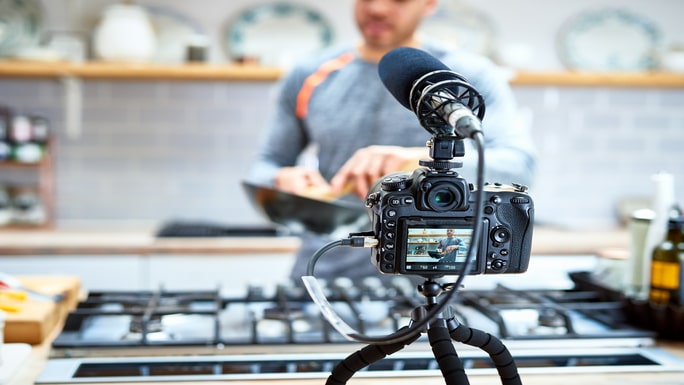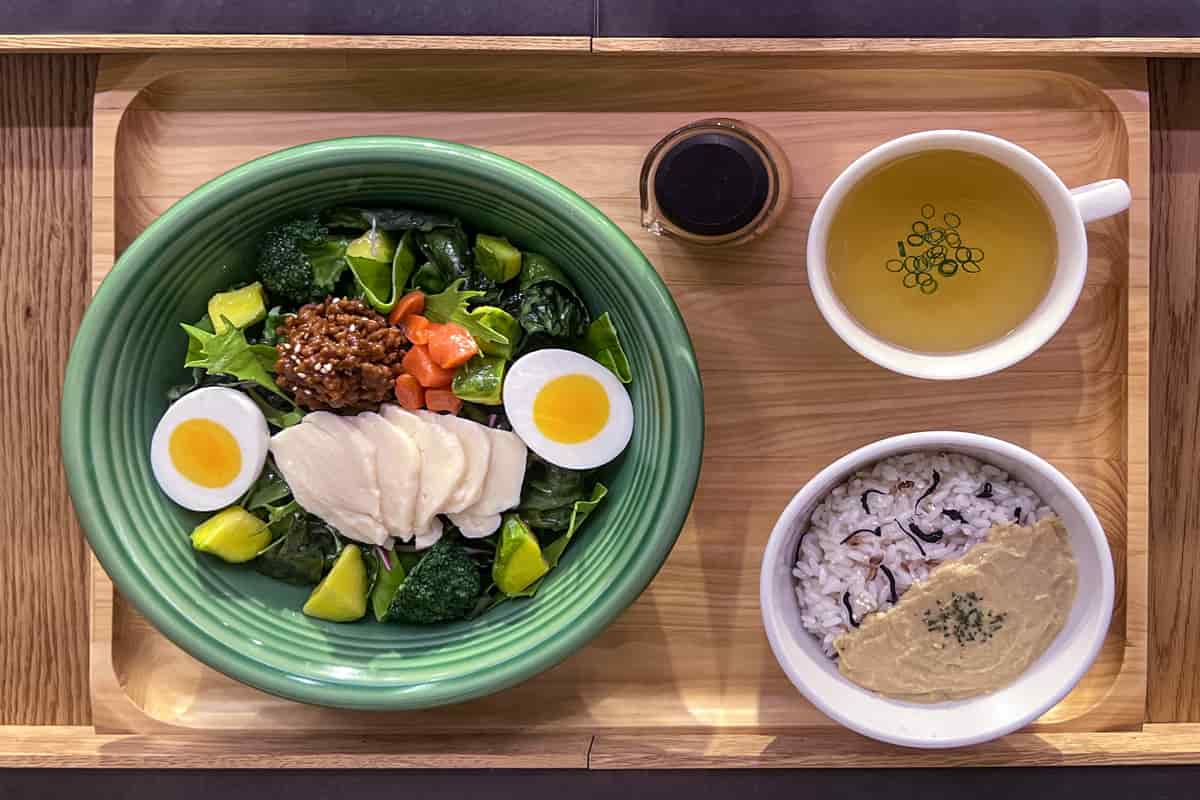In the competitive world of food and beverage, companies are constantly working to stand out from the crowd. That’s where food and beverage marketing comes in – it’s the behind-the-scenes strategy that creates brands and persuasive advertisements. Let’s explore the tactics and precise planning that push the boundaries of food and beverage marketing.
What is food and beverage marketing?
Food and beverage (F&B) marketing refers to strategic processes implemented by businesses in the F&B sector to promote their products or services effectively. It’s an umbrella comprising various elements such as market research, product development, branding, advertising foods, and pricing strategy – every element that helps ensure good food sales.
Food marketing isn’t necessarily limited to stimulating hunger pangs. It can also create a desire among consumers to taste or experience what an establishment is offering. This can include convincing customers that they need non-essential or luxury food and beverages. Who knew customers would need so many varieties of coffee when a simple brew once sufficed?
Objectives of food and beverage marketing
Food and beverage marketing is, quite simply, all about increasing sales. This can be sales to individual customers, or wholesale. This includes keeping sales of existing products high, and marketing new products. The three main outlines to achieve this are listed below.
Increasing brand awareness
The first aim is to increase brand recognition through strategic campaigns, captivating visuals, and engaging content. This can be achieved through connecting a food and beverage brand with a larger audience and creating lasting impressions.
Boosting revenue
To boost sales for a food and beverage business, managers need to implement attractive offers, innovative marketing techniques, and customer-centric strategies, possibly with the help of a revenue management consultant. This approach aims to not only boost profitability but also drive overall financial growth for the business.
Gaining market share
To outperform competitors, markets need to focus on reaching untapped customer segments, positioning their products, and consistently delivering value. These strategies will help companies expand their customer base and establish a strong presence in the food and beverage market.
These objectives map out key steps of effective promotional efforts, which are one part of some food and beverage jobs, directly influencing profitability, scalability, and brand credibility in this sector.
Benefits of food and beverage marketing
The fusion of strategic creativity and logical marketing methods in food and beverage marketing can produce great results. From building a recognizable brand identity to reaching larger target demographics, the advantages are many.
Wider customer reach
One benefit of comprehensive food and beverage marketing is the potential for massive customer reach. Effective strategies, specifically digital ones such as social media advertising or blogging, make it easier to broaden your market scope. Instead of being confined within local areas, brands can extend their territories across the globe.
Enhanced brand recognition
Marketing for food also significantly increases brand recognition. With improved visibility through considered advertising campaigns, consumers can easily identify your products on shelves. This helps make sure that a certain brand is their go-to. The ultimate aim here is to encourage people to think of a particular brand first and foremost – For example, think about how people automatically say ‘Google’ instead of ‘search engine’.
Increased sales
At its core, promotion is aimed at driving business growth through increased sales volumes. Making simple changes such as using attractive packaging or offering consistent quality can hugely influence purchasing decisions and lead to increased sales volumes.
Solidifies consumer loyalty
Consumer loyalty is an intangible asset treasured by successful companies worldwide. Through consistent delivery of superior services and transparency about ingredients used in preparation processes (especially when advertising healthy foods), vendors and restaurant managers provide customers with a reason to stay loyal to their brands.
The importance of effective marketing for food cannot be overstated. Its value becomes evident when marketing efforts translate into higher sales and return visits. If you want to learn more about marketing for hospitality venues, you can get all the skills and knowledge you need with a hospitality degree.
Begin your exciting adventure in food and beverage marketing with our degree that combines teaching from industry experts with opportunities to gain prestigious real-world experience.

Steps to creating a food and beverage marketing plan

Effective food and beverage management is fundamental in the F&B sector, and creating a solid marketing plan is an essential part of this. Here’s an eight-step guide on how to create an F&B marketing plan.
1. Feasibility study
Begin with a feasibility study to gauge market response. Your study needs to include these steps:
- Assess customer demand and see if there is a viable audience for your F&B business
- Determine pricing margins to check that your business would be profitable
- Analyze market size using demographics to have a better idea of growth potential
2. Market area analysis
Understand your chosen market area’s characteristics. To do this, you should:
- Study population trends to see what kind of people you are catering to
- Consider income levels so that you know where to price your product
- Incorporate cultural preferences to make sure that your product will be accepted by the target market
3. Site evaluation
Evaluate your business site for visibility and accessibility. To do this, you can:
- Factor in foot traffic or online behavior to check if an area will get enough traffic
- Consider proximity to competitors, as nearby competitors could cause income issues
- Assess rent rates to make sure that your business will be profitable after these costs
4. Competition analysis
Understand competitors’ strategies, by taking steps such as:
- Analyze offerings, prices, and promotions to see what works, and how you can stand out among your competitors
- Formulate counter-strategies to emphasize your strengths, drawing customers to you
5. Demand estimation
Estimate demand through surveys or trial launches. This includes:
- Anticipating seasonality or trend shifts to make sure that your business stays relevant with good offerings
- Predicting sales fluctuations to help you make the most of high sales seasons and ride out bad seasons.
6. Operating projections
You need to look at your operating results with costs in mind. Things to include are:
- Factor in staffing, equipment, and utilities, as all of these will cut into your profit margin
- Forecast cost-efficient areas where you can make the most of your operating costs and keep outgoings low
7. Stay updated
Stay updated with industry trends. To do this, you should:
- Adapt to changing consumer interests to keep your sales high
- Navigate market fluctuations and ride out rough patches with careful financial planning
8. Brand identity development
Develop a strong brand identity. Some good ways to do this are:
- Choose a unique name that is easy to remember and spell for online searches
- Design a compelling logo and tagline that makes people recognize your food
- Maintain consistency across your whole range so that people know what they’ll get when they use your services
By following these steps, you’ll have created a robust and effective food and beverage marketing plan.
Marketing strategies for food and beverage businesses
Around 60% of food and beverage CEOs consider digital transformation a primary catalyst for growth and operational efficiency in their industry. The key objective of digital transformation is to incorporate innovative strategies into your marketing plan.
1. Social media and blogs
Use popular social media platforms such as Instagram, Facebook, Pinterest, X (Twitter) and blogs to actively involve your customers. Use these platforms to display your products and establish an emotional connection.
2. TV ads for impact
Television advertising continues to be effective in reaching a wide audience and establishing brand credibility. By showcasing dishes and incorporating endorsements from renowned chefs or celebrities on television, advertisers can capture the attention of more diverse audiences.
3. Sponsorship and partnerships
Attract health-conscious consumers by partnering with local sports or health events. Increase credibility and reach a wider audience by collaborating with dieticians or nutritionists who can support your brand. Celebrities or influencers can also engage new audiences.
4. Irresistible offers
The availability of deals plays a significant role in shaping buying behavior. Discounts, rewards for bulk purchases and complimentary items are powerful incentives that drive sales and contribute to revenue growth.
Learning all about these marketing strategies and others is vital for success in any hospitality field. If you want to get the skills to get ahead, you should consider a course from a respected hospitality school, where you will learn how to put these kinds of strategies into action.
Take your career to a new level with an MBA where you’ll network with industry leaders, learn through real-world placements and discover the strategies behind management in the food and beverage sector.

Top tips for food and beverage brands
To thrive in the highly competitive food and beverage industry, it is crucial to develop innovative strategies. Follow these proven tips to elevate your brand and achieve success.
1. Impactful brand identity
Creating a strong brand presence involves more than just designing a creative logo. Consumer branding strategy means developing a clear vision and unique selling proposition that connects with your target audience. Engage through social media, events, and loyalty programs, and make sure you always deliver on your brand promise to establish trust and build loyalty.
2. Audience understanding
To maximize the effectiveness of your marketing efforts, it is key to have a deep understanding of your target audience. This entails conducting research on their demographics, preferences, interests, and pain points. According to McKinsey & Company, tailoring advertisements to specific groups can increase ROI by 10%.
3. Visual appeal
Use captivating visuals. Around 72% of US consumers say design influences their purchasing decisions. High-quality images of your products can evoke immediate desire, leading to quicker purchasing decisions by your target consumers. Consider investing in professional photo shoots to capture the true essence and appeal of your offerings.
4. Packaging impact
The way a product is packaged plays a vital role in how consumers perceive it. By creating innovative packaging that meets the needs of the target market, businesses can influence purchasing decisions. How food is packaged is increasingly under the spotlight, so make sure that you consider the environmental impact of your packaging too.
5. Metrics monitoring and adaptation
To determine the effectiveness of your marketing efforts, it is important to track key metrics. This includes analyzing your return on investment (ROI), rates of new customer acquisition, and the success of your campaigns. For valuable insights and customized solutions, consider professional marketing services.
Professional online marketing services for food and beverage brands
In the competitive food and beverages sector, brand visibility should not be underestimated. Food management consultants say professional online marketing services can be an essential investment for an internet presence that will deliver results.
Tailored content creation
Curating personalized content that resonates with your audience can make a huge difference. From developing catchphrases to optimizing keywords, the objective is to boost your brand’s visibility online and make a real connection with your target audience. You need to know what kind of content will build rapport with existing and potential customers.
Comprehensive monitoring tools
Online marketing professionals also possess comprehensive analytics tools that are critical in tracking metrics for performance evaluation. Such insights allow businesses to rethink and adjust their strategies when necessary.
Social media leveraging
Marketing veterans can initiate engaging social media campaigns. Leveraging platforms such as Instagram, Facebook, and X (Twitter) can help amplify post reach and customer engagement levels. This is a field with a lot of nuances, and it can be helpful to get the services of someone who is an expert.
Search engine optimization (SEO)
Online professionals also harness SEO to boost website rankings. Google isn’t just about searching anymore. It now encompasses service promotion and sees itself as a marketplace. SEO plays a pivotal role in encouraging potential customers to access your products with ease and can increase your credibility with high organic rankings.
How to learn more about food and beverage marketing
To master marketing for hospitality, start by immersing yourself in the industry’s unique challenges and trends. Begin with foundational knowledge of customer behavior and market dynamics. Then familiarize yourself with digital marketing tools and platforms, emphasizing social media, online reviews, and search engine optimization. Learn from successful hospitality marketing campaigns and stay updated on innovations in the industry. Networking with professionals in the field and seeking mentorship can provide invaluable insights. If you are looking for the right place to start, studying for a hospitality degree will help.
Discover the techniques used for crafting brands that capture the imagination with our degree that combines knowledge with essential practical experience and networking.

Conclusion
In the digital age, innovative strategies in food and beverage marketing have taken center stage. F&B businesses are developing new approaches to engage with audiences and ensure their visibility in the market.
This area is growing so fast that there are now professional online marketing services tailored specifically for food and beverage brands. Food and beverage is an area of hospitality that is experiencing significant growth, so there are plenty of marketing roles available. Take advantage of these expanding opportunities by studying the skills and techniques necessary for success at a renowned hospitality school such as Les Roches.
Main Image:
DigiPub/ Moment Via Getty Images




